
"The truth does not change according to our ability to stomach it emotionally." – Flannery O'Connor
Burnout is pervasive and in full force across all of Corporate America. That’s the truth – no ifs, ands, or buts about it.
You can fight back and tell yourself that this doesn’t apply to your organization, culture, and people. That mindset will only bury the issues that we all know exist.
Or maybe you get that burnout is impacting you and your team, but you don’t know what to do about it.
Either way, we have to come to grips with the reality of the situation. More than that, we have to accept it and fall in love with what’s going on. Sounds wild, right?
By embracing the current state of burnout, we can then create a new reality.
Breaking the Cycle of Burnout at Work
Andrew Freedman, author of THRIVE, hosted a live webinar to dig into the role both leaders and employees play in preventing, controlling, and reversing burnout. It was action-packed and full of tactical recommendations.
Curious what burnout prevention tips and advice have helped ourselves and our clients?
- Keep reading to catch some key takeaways
- Review the presentation deck (and share it with your team)
- Watch the video recording to get the full experience
Setting the Stage
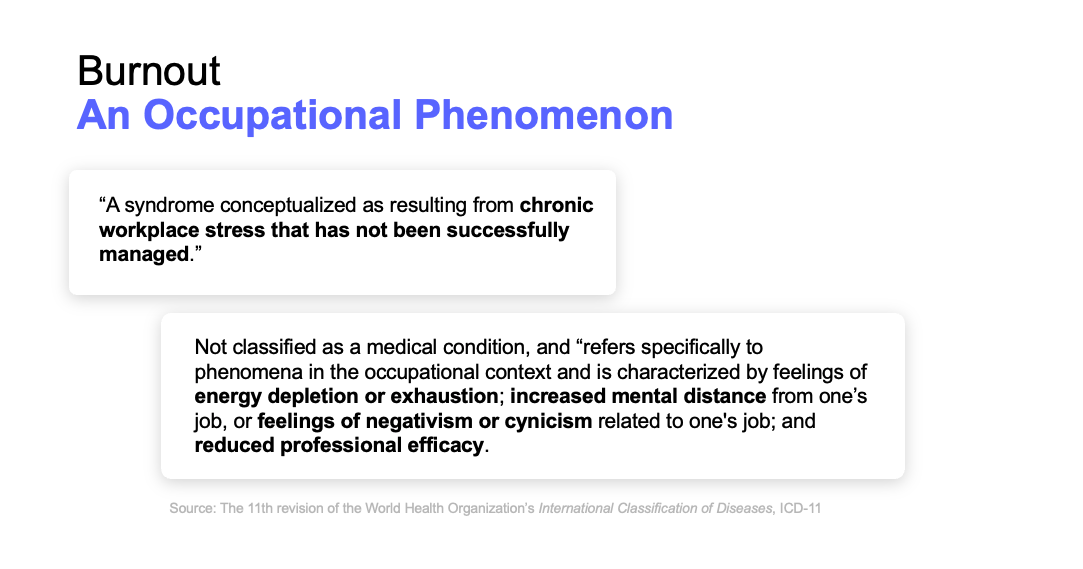
The World Health Organization deemed burnout as an occupational phenomenon. It’s something caused in and by the workplace. Beyond that, it’s important to see that this syndrome is caused by organizational systems – things that leaders can definitely influence.
Before you can influence change, you have to understand how people are feeling.
We kicked off the webinar by asking “how is burnout affecting you and/or your team?”
Here are a few responses that help paint the picture:
- Physically and mentally exhausted
- Lack of focus and patience
- Feeling isolated
Despite how grim and frustrating it may seem, there are ways to move beyond what can feel like perpetual burnout.
Watch Out For Burnout Warning Signs
A clear understanding of what causes stress can help you see how burnout shows up in your work environment.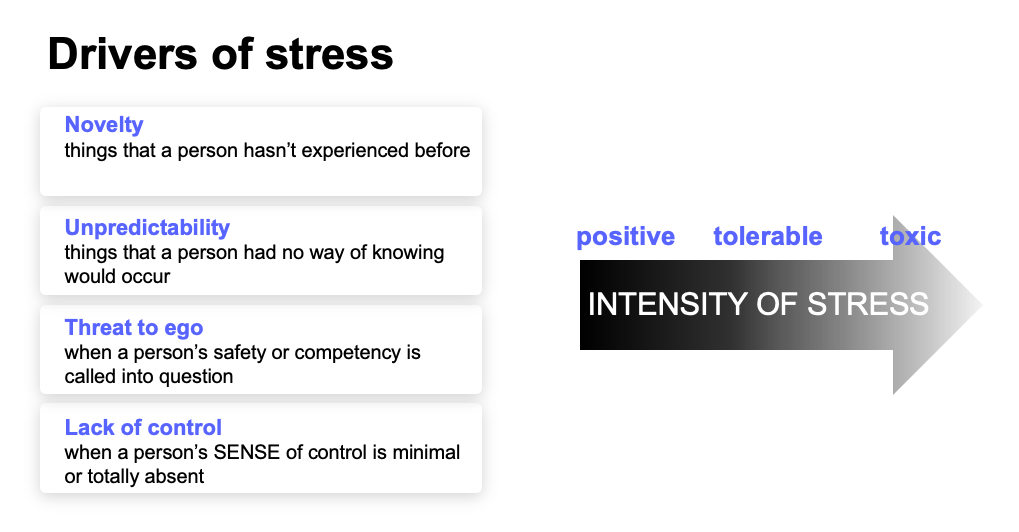
The impact of stress isn’t always easy to spot, but here are a few things to look out for in yourself and those you work with.
- Effects on mood: Anxiety, overwhelmed, restless, depression, low energy
- Effects at work: Disorganized brain, reduced coherence, inhibited creativity, limited flexibility, low effort
- Effects on behaviors: Withdrawal, outbursts, overeating, undereating, substance abuse
- Effects on your body: Headaches, sleep problems, fatigue, upset stomach, chest pain
Leaders have to be adept at recognizing and addressing these indicators as they become visible.
Remember: This is a complex situation. It's not all on leaders and it's not all on employees. Everyone has a role to play.
Through the Lens of the Leader
The next question we asked our live audience was – “what is the role of the leader in creating a high-performing and healthy culture?”
Here’s some of what we heard:
- Show empathy, transparency, engagement, listening
- Provide psychological safety
- Make it safe to have work-life balance
- Coach for success by leading through example
So, what’s our definition?
Create a barrier-free work environment.
Through a systems-based approach, the leader’s role is to understand:
- What barriers are getting in the way of your people doing and being their best?
- How can you help reduce or eliminate those barriers?
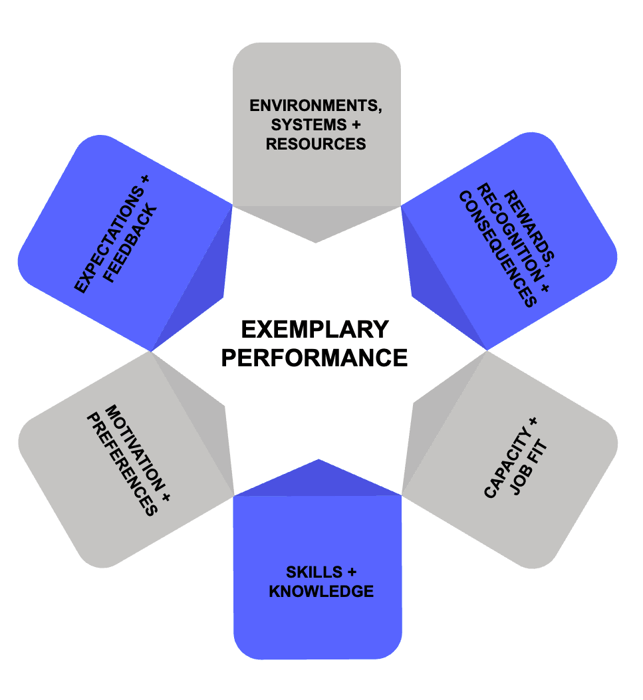
As outlined in Andrew’s book, THRIVE, this high-performance model sheds light on the internal and external influences associated with exemplary performance.
Each of these six influences has a direct impact on an individual, team, and organization’s ability to consistently perform at high levels – and to do so without unnecessary friction.
The top three influences are external to the person who is doing the work. Consider this as what the organization and leaders do “to” their people.
The bottom three influences are what the person brings to the job.
The most effective organizations we’ve seen take what they know about the individual (motivation and preferences, skills and knowledge, and capacity and job fit) and use that to inform the top lever of “expectations and feedback.”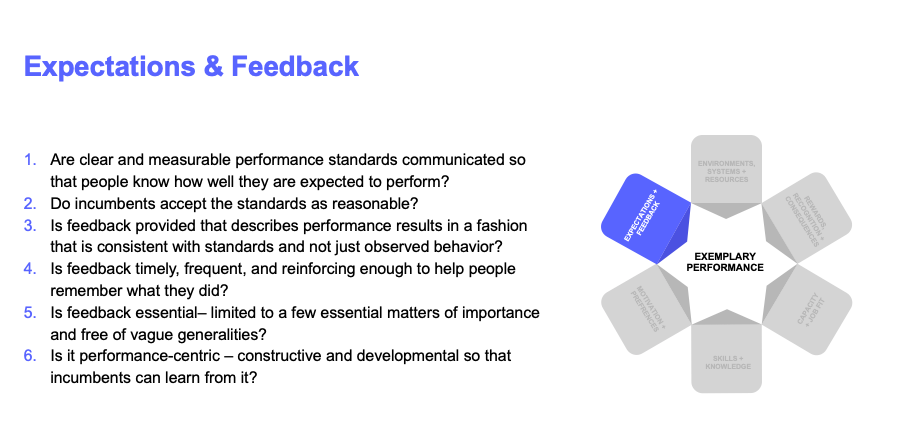
These are questions that leaders can reflect on in regard to “expectations and feedback.”
In the full video recording and presentation deck, you’ll find examples for each of the key influences.
Foster Psychological Safety
If you learn to create psychological safety, you can talk to almost anyone about almost anything.
It starts with mindset. Your mindset has a huge impact on your team’s mindset, which is why it’s so important to model the way.
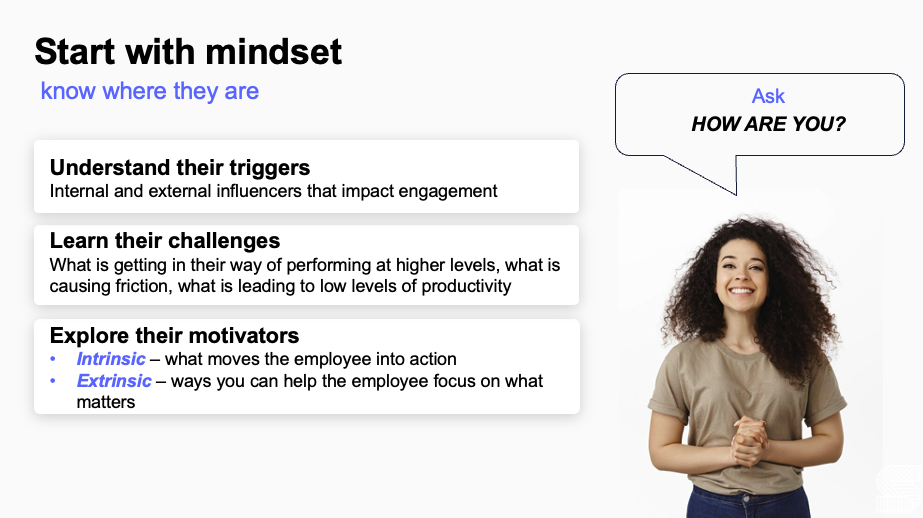
For example, if you’re not talking to your people in one-on-ones and team meetings about burnout and how they’re feeling, you’re missing a great opportunity to show your team that you really care – and to learn how you can better support them.
Simply saying “my door is always open” or “you can always reach out to me” is not enough.
What you can and should do is ask your people this question – “how are you?” – and where you place the emphasis is critical.
During these conversations, the best way you can show your team that you’re in this together is to:
- Be present
- Be a good listener
- Ask thoughtful questions
- Be vulnerable
Don't Overlook the Value of Manager-Employee Relationships
One of the reasons for employee burnout is that they’re losing their sense of connection to the purpose of their work and the people they do it with.
In consulting with over 650 organizations, more than 60% of employees and managers report that one-on-ones and performance reviews are not as valuable as they could be.
People don’t often see one-on-ones with their managers as the most important or valuable meeting of the week – and that’s a missed opportunity.
Let your people know that you’re committing to improving how you support and work with them. Ask them specifically what they would find most helpful or valuable in your interactions.
By asking how you can be better and by showing your own vulnerability, you can create space for honest conversations where they feel safe to tell the truth. This is fundamental to your ability to address, prevent, control, and reverse burnout.
Don't Avoid Stay Interviews
Everyone talks about exit interviews, but how about the people that stay?
Instead of only interviewing people as they leave, you need to understand how the people who stay are feeling. Don’t forget that they are the ones who often take on the brunt of the work left behind by those who leave.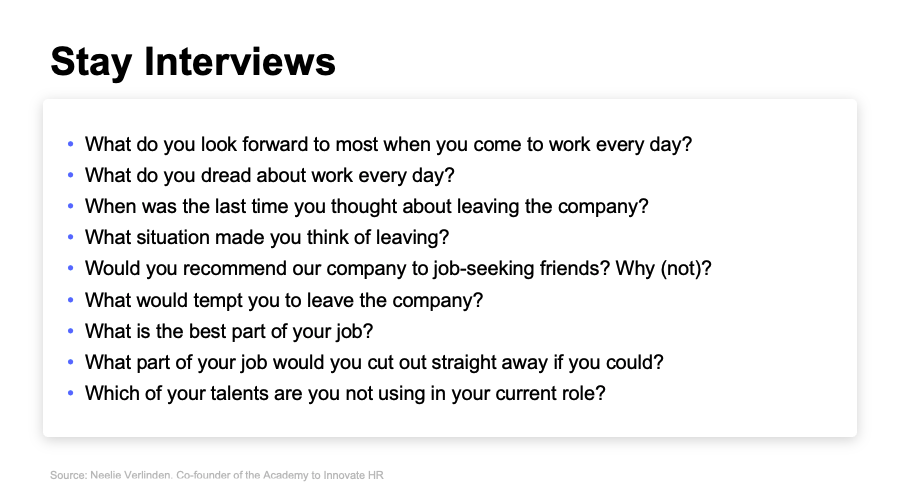
This list includes a few questions from these
“21 Best Stay Interview Questions to Ask.”
It may sound counterintuitive, but you should want to hear what people dread about work or if and why they’ve thought about leaving. When you let your team know it’s safe to talk about their difficulties, it sets you up to be a better and more equipped leader who can truly help them.
Through the Lens of Individuals
Resistance vs. Resilience
Everyone needs to understand that we all have two shades of ourselves – light and dark.
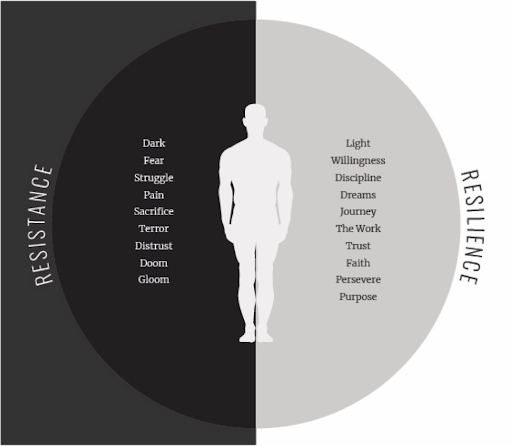
The dark side of us is where resistance shows up. We all deal with this and it hits us every single day. This shows up when we focus on the struggle and pain we face.
When we’re our dark selves, let’s not judge it – let’s accept it. Let’s love that part of ourselves and our colleagues because only then can we realize everyone is going through something.
There’s also the light self, which is resilience. This is when we have willingness, discipline, dreams, and we focus on the journey. We operate with trust and faith as opposed to fear.
We have to get through some of the dark in order to get to the light. By understanding this about yourself and your people, you can have more control over burnout.
Routines Help Create Your Recipe for Success
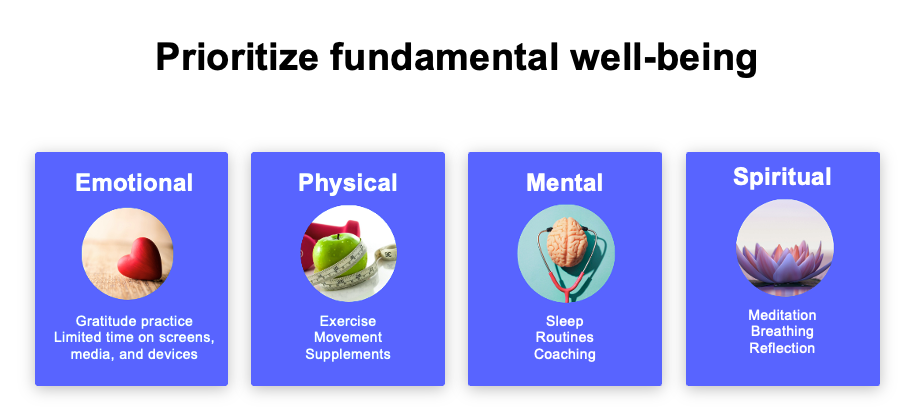
These four areas – emotional, physical, mental, and spiritual – are aspects that should be integrated in one way or another into your routine.
What works for one person may not work for another, so you have to think about what routines will serve you well.
When you have a routine that equips you to be your best self, you set yourself up to hit your goals.
1:1 Burnout Prevention Strategy Session
If you or your team want to talk through the challenges you’re facing, we’re here to help cook up a game plan so you can start thriving. Email us at team@shiftthework.com.
For additional resources, explore other articles featured on our SHIFT Blog and subscribe to our Stories that SHIFT newsletter.







